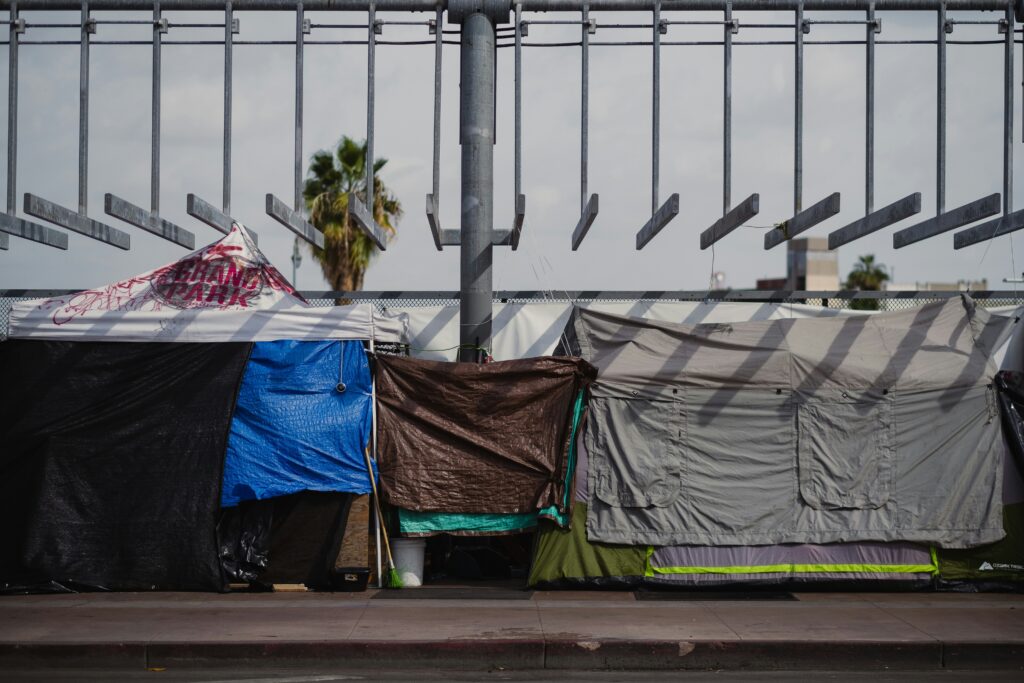Houselessness exacerbates the physical and emotional discomforts of menstruation. In Canada alone, where the houseless population fluctuates between 150,000 to 300,000 annually, approximately 28% are menstruators (1). This statistic underscores the urgent need to address the unique challenges faced by those experiencing houselessness in managing menstruation.
Period products are expensive!
First and foremost, it’s crucial to recognize that menstrual health management (MHM) comes with a significant financial burden. While Canada has removed taxes on menstrual products, they are far from being freely accessible. The estimated lifetime cost of period products can reach up to $6,000, rendering them unattainable for those experiencing houselessness (2). Consequently, individuals often face the agonizing choice between purchasing menstrual products and meeting their basic needs, such as food and shelter.
Access to products in shelters
Moreover, the availability of menstrual products in shelters, though provided, is often inconsistent and insufficient (3). Donations can vary from week to week, leaving menstruators with unpredictable access to essential items. Moreover the access to these products can be limited by gatekeepers in shelters who control the amount of products people can take (4). Furthermore, the quality of the products may not meet the required standards, with some pads being too thin to provide adequate protection.
Risky solutions
In the absence of reliable access to proper menstrual products, houseless menstruators may resort to unhygienic or makeshift solutions, such as using sponges or cloths. These improvised methods pose health risks as they can lead to a series of infections and irritations (5). They can also perpetuate feelings of shame and indignity. Additionally, some may engage in survival shoplifting, resorting to illegal means to obtain essential products due to their unaffordability.
Reusable products?
Transitioning to more sustainable menstrual products, such as reusable pads, underwear, or cups, could offer a healthier, environmentally friendly, and more cost-effective solution. However, the upfront higher cost of these products and the lack of access to sanitation facilities, such as clean water, public toilets, and washing machines, pose a significant barrier to the adoption of these alternatives for individuals experiencing houselessness (6, 7).
Stigma
Beyond the practical challenges, societal stigmas surrounding menstruation compound the difficulties faced by houseless menstruators (8). Societal norms perpetuate the idea that the “normal body is not a bleeding body” and that menstruators should conceal their periods, leaving menstruators experiencing houselessness feeling marginalized and reluctant to seek help (9). People experiencing houselessness have limited access to privacy and often rely on others to manage their menstruation, such as asking shelters for products. Even if products are available, some individuals will remain reluctant to ask service providers for pads or tampons due to the feelings of shame and embarrassment associated with menstruation. The visibility of houselessness contrasts with the intimacy that these menstruators want to manage the physical and emotional aspects of menstruation (10).
It’s not only the bleeding…
Furthermore, menstruation exacerbates the physical and emotional discomfort of sleeping on the streets (11). The lack of stable housing and the constant need to relocate intensify the challenges of managing period pains and emotions. Sleep, already elusive for many houseless individuals, becomes even more elusive during menstruation, further compromising their well-being.
What do we do?
Addressing the intersection of houselessness and menstrual poverty requires a multi-faceted approach that acknowledges the complex interplay of financial, logistical, and societal factors. Implementing regulations to ensure free and reliable access to menstrual products in shelters, along with education and destigmatization efforts, is essential. Additionally, initiatives to promote sustainable and reusable menstrual products should be accompanied by investments in sanitation infrastructure to ensure their feasibility for houseless individuals.
Above all, fostering a supportive and inclusive environment where menstruators experiencing houselessness feel empowered to seek assistance without fear of judgment is crucial. By recognizing and addressing the unique challenges faced by this vulnerable population, we can strive towards a more equitable and dignified society for all.


